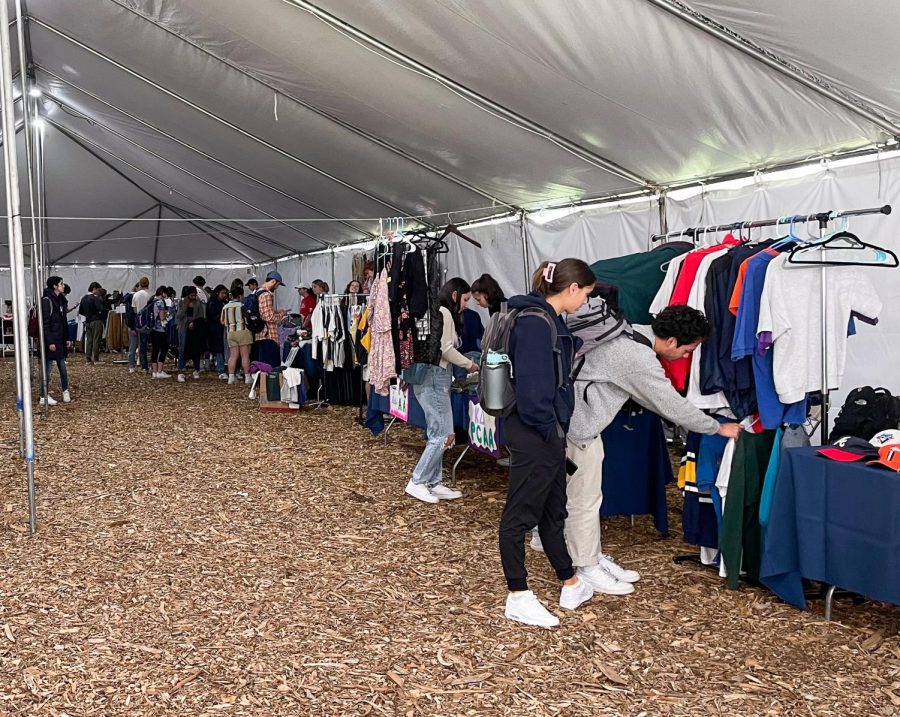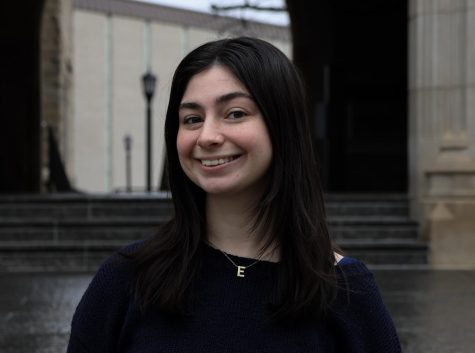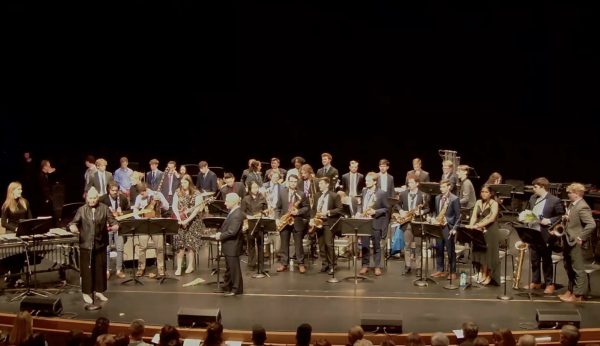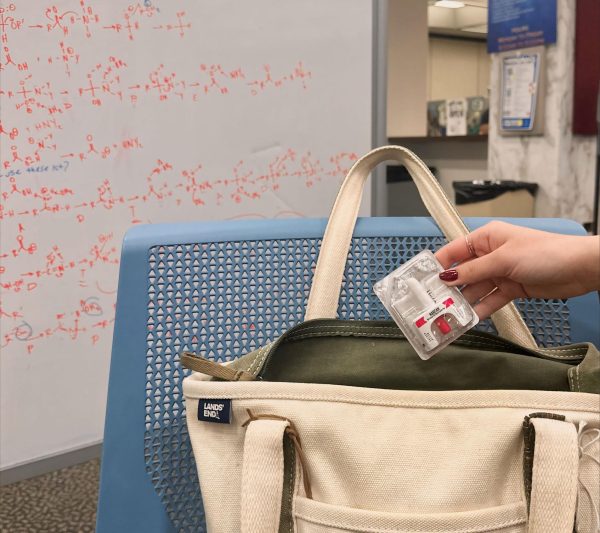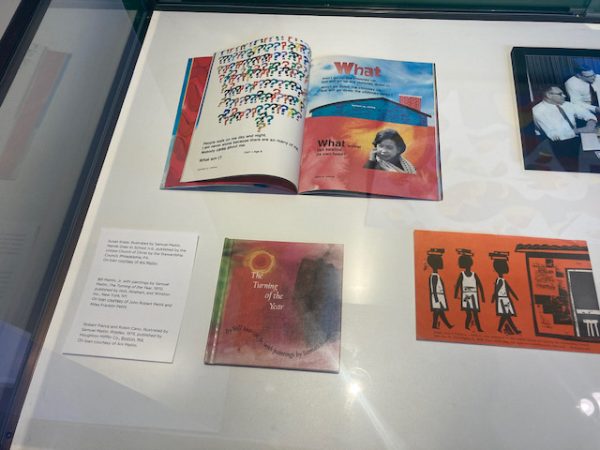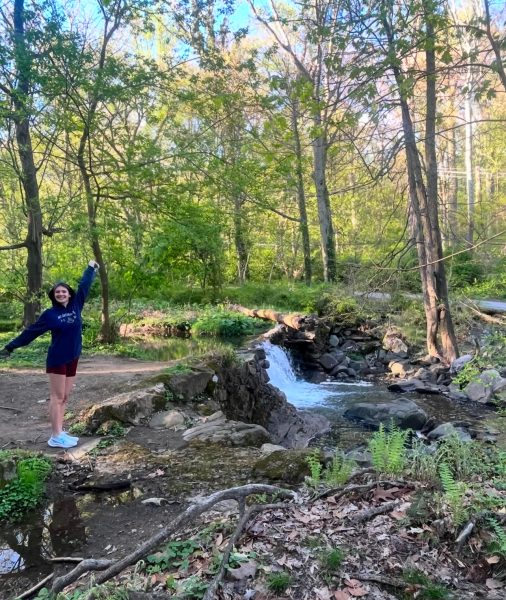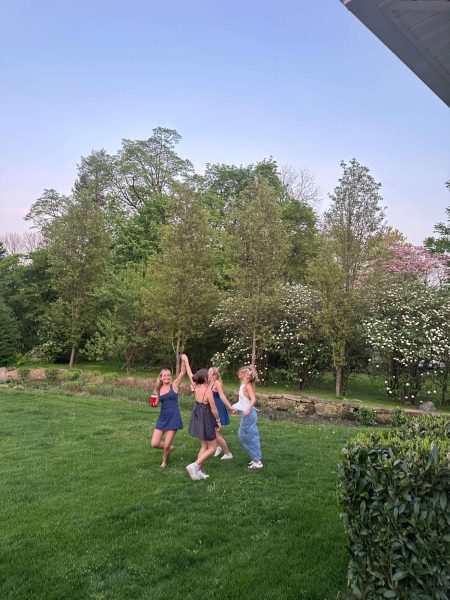Sustainability Committee Holds Wildcat Thrift Shop
Students parse through clothing from the Wildcat Thrift Shop in the Driscoll Tents at last year’s Wildcat Thrift.
April 14, 2022
On Friday April 8, Villanova’s Student Sustainability Committee (SSC) hosted the Wildcat Thrift Shop at the Driscoll Tents. At this pop-up shop, students sorted through many tables to find the perfect addition to their wardrobes.
In order to get this event running, the Student Sustainability Committee worked hard to ensure the success of the pop-up thrift shop. The brains behind this event were SSC members Emily Jaenicke, Gillen Curren, Shea Murphy, Maggie Cavanaugh and Aja Eiden. All of them worked together to plan the outdoor thrift shop and contributed to its success.
The inspiration behind this event was to promote sustainability in shopping habits. The thrift shop was hosted with the circular economy in mind, which involves recycling and refurbishing used materials to prevent waste. Additionally, the thrift shop not only promotes sustainability but also contributes to fundraising and profits for the SSC.
“I saw the opportunity to take the circular economy model that so many institutions and companies are attempting to implement and simplify it,” Jaenicke said. “We have a tight knit campus full of students willing to be involved. I also saw a place for profit and fundraising. I emailed Liesel, our sustainability manager, in May of 2021 and asked what she thought about an on-campus thrift shop run by students. I built the framework up from the ground with the help of her, Maggie and Gillen so that it would draw people in to see the opportunity in creating new systems that value circularity.”
In order to build upon this inspiration, the SSC members behind this event put in lots of preparation for the pop-up shop. The members found that communication was key to a successful event.
“There are so many stakeholders involved in successfully pulling off this event, so open communication is a must,” Cavanaugh said. “Emily, Shea, Aja and I communicate in a group chat, and I meet with Liesel weekly to keep her updated. We also have running email chains with Catholic Relief Services, the Wildcat Wardrobe and our vendors so that everyone knows what is expected of them.”
The vendors for this event were made up of Villanova’s student body. The opportunity to be a vendor was open to all interested, and many individuals and groups hosted tables at the thrift shop.
“In addition to individual students of all class years holding their own tables for the event, we also have various student organizations acting as vendors for the event,” Eiden said. “We have everything from Greek Life frats and sororities, to athletic groups, to fashion-based student organizations hosting tables.”
Not only did the Wildcat Thrift Shop work towards creating a sustainable environment, but it also had a philanthropic aspect to it. Many of the student groups used the profits from their sale to benefit charitable organizations.
“The student groups are donating their profits to charities of their choice, like Swim Across America, Women’s Heart Health and Prevent Child Abuse America,” Curren said. “It’s really cool to see this project merge together sustainability and philanthropy, so students buying clothes are doing good for the environment and for charity.”
The Wildcat Thrift Shop held by the Student Sustainability Committee was very successful. The purchasing of second-hand clothing helped to promote a circular pattern of purchases among the Villanova community. As students participated in the thrift shop, they contributed to a more sustainable environment while finding repurposed pieces of clothing. The members of the SSC succeeded in showing the importance of sustainability to the Villanova community.
“I want to show Villanova students that it can be easy and fun to make more sustainable decisions that are truly impactful,” Murphy said. “Bringing people together reinforced that collaboration and creativity are incredibly valuable when it comes to sustainability.”

